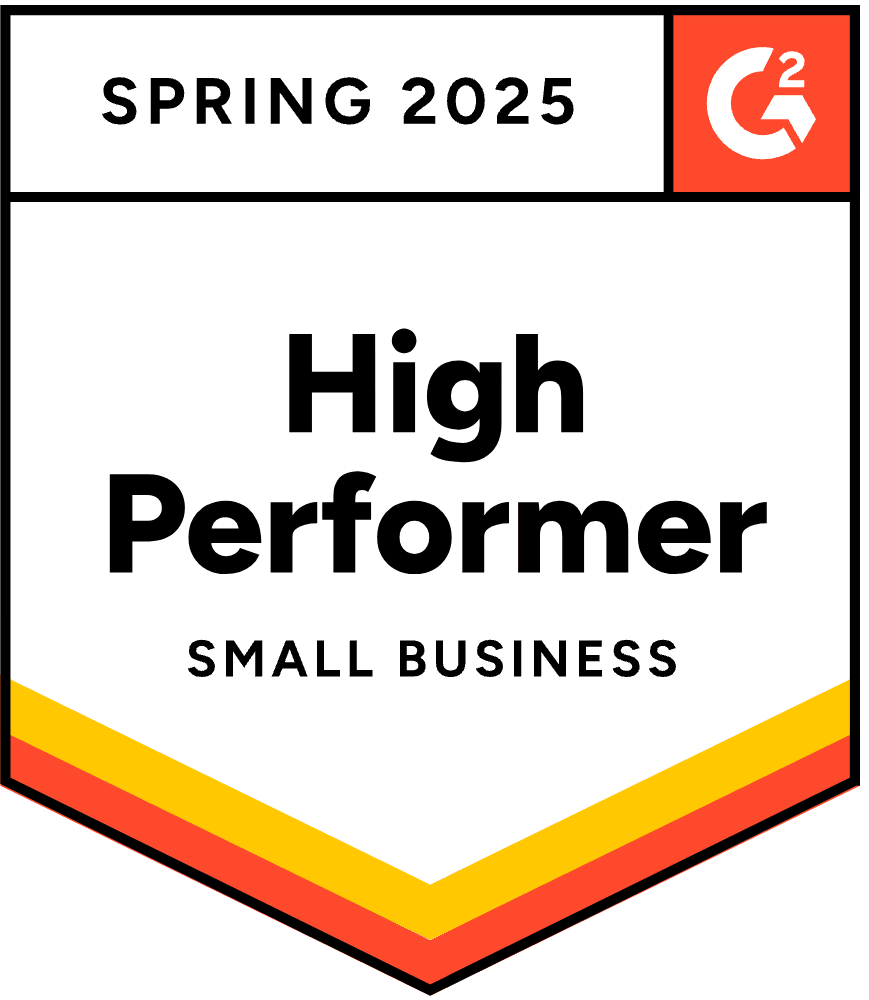- Blog
- What is CRO? Everything You Need to Know
What is CRO? Everything You Need to Know
-
Nikolett Lorincz
- Conversion
- 6 min read
Table of Contents
Ever wondered why some visitors come to your website, browse around, and then leave without making a purchase? It’s frustrating, right?
You’ve done the hard work of getting them to your site, but somehow, they’re not converting. This is where conversion rate optimization (CRO) comes into play.
A well-defined conversion rate optimization strategy is essential for transforming casual website visitors into engaged customers, without having to constantly pump more money into traffic generation.
In this article, we’ll break down what conversion rate optimization is, why it matters, and how you can use it to skyrocket your business results.
Let’s get started!
What is conversion rate optimization (CRO)?
In simple terms, conversion rate optimization (CRO) is the process of improving your website to increase the site’s conversion rate, which is the percentage of visitors who take a desired action, whether it’s making a purchase, filling out a form, or subscribing to a newsletter.
It’s all about understanding user behavior and refining the customer journey so that more visitors become leads or customers.
Why does CRO matter?
You’ve invested in marketing and SEO to bring web traffic to your site, but without CRO, you’re potentially losing money.
Think about it: if 1,000 people visit your ecommerce site and only 10 buy something, your website conversion rate is 1%.
What if you could tweak a few elements and double that? Suddenly, those same 1,000 site visitors generate twice the revenue—without spending a dime on extra traffic.
That’s the magic of CRO. It’s all about working smarter, not harder.
The CRO process: step-by-step
To get started with CRO, you need a clear, structured process to track and improve your conversion rates.
Here’s a breakdown of how to approach it effectively:
Step 1: Research and analysis
Before you can optimize, you need to understand what’s happening on your site.
Effective data management is crucial for gathering and analyzing the information needed to optimize your site. This is where tools like Google Analytics or Hotjar come in handy.
Start by identifying key web pages (like your product or checkout pages) and look for patterns.
Are website visitors dropping off before completing a purchase? What are they clicking on?
Also, gather feedback from customers to understand their pain points.
Step 2: Goal setting
Once you have data, define specific, measurable goals.
What do you want to improve? Whether it’s increasing your add-to-cart rate or boosting email sign-ups, make sure your goals are clear and aligned with your business objectives.
Step 3: Hypothesis creation
Now, it’s time to develop hypotheses based on your research.
For example, if you notice people are dropping off at the checkout page, your hypothesis might be, “Simplifying the checkout process will reduce cart abandonment.”
This gives you a clear direction for testing.
Step 4: A/B testing and experimentation
Next up is experimentation. Use A/B testing to compare two versions of a landing page or element to see which performs better.
You can also try multivariate testing, where several variables are tested simultaneously. It’s important to run these tests long enough to gather meaningful data.
Step 5: Analysis and implementation
Once your tests are complete, analyze the results. Did your hypothesis hold true? If so, implement the winning changes permanently. If not, review the data and test a new hypothesis.
Step 6: Continuous optimization
Conversion rate optimization (CRO) isn’t a one-and-done deal. Keep testing and tweaking to find new ways to improve.
Even small changes can lead to big results over time, so always be on the lookout for opportunities to optimize.
Watch this video for more details on the CRO testing process:
7 successful CRO strategies to boost conversions
Now that you’ve got the basics down, let’s dive into seven practical conversion optimization strategies you can implement right away to improve your conversion rates.
1. Encourage customers to buy with a discount popup
Offering a discount to first-time visitors is a tried-and-true marketing strategy.
Take Bubble Skincare as an example. They use popups to capture emails in exchange for a discount.
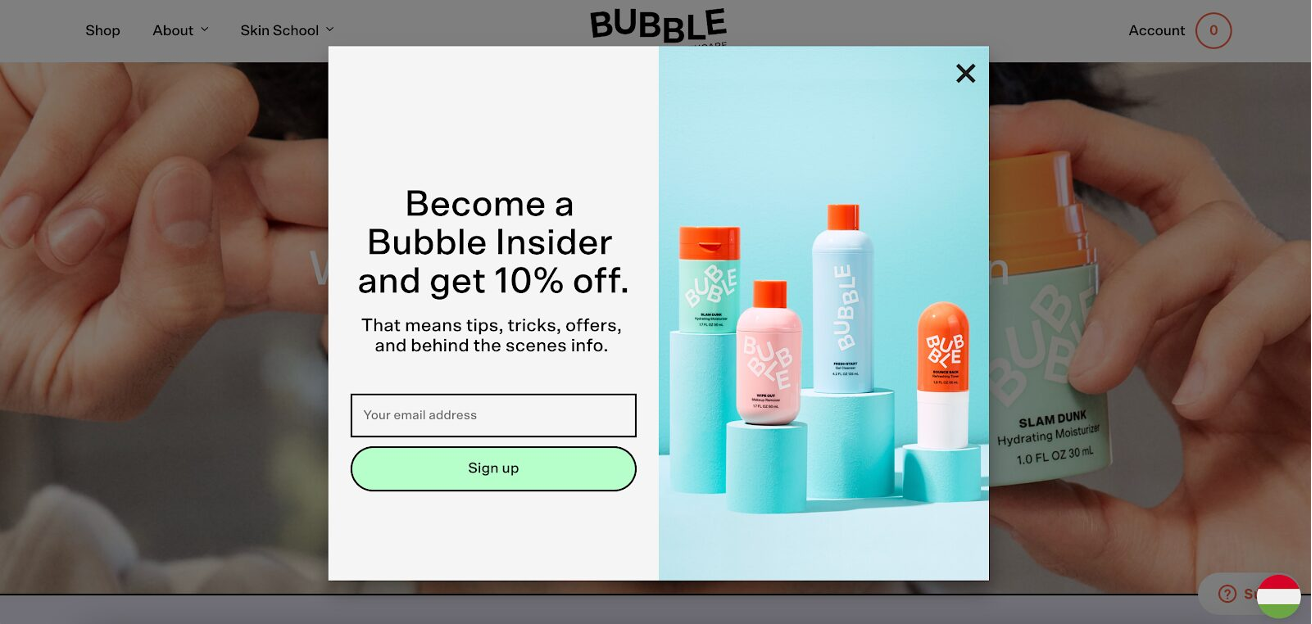
But here’s the thing—generic discount popups are becoming less effective. To make yours stand out, follow this formula:
- Start with a Yes/No question.
- Trigger it on exit intent.
- Make it mobile-friendly.
- Add trust signals like customer reviews.
- Delay the closing “X” for a few seconds.
- Use unique discount codes.
- Display personalized product recommendations on the thank-you page.
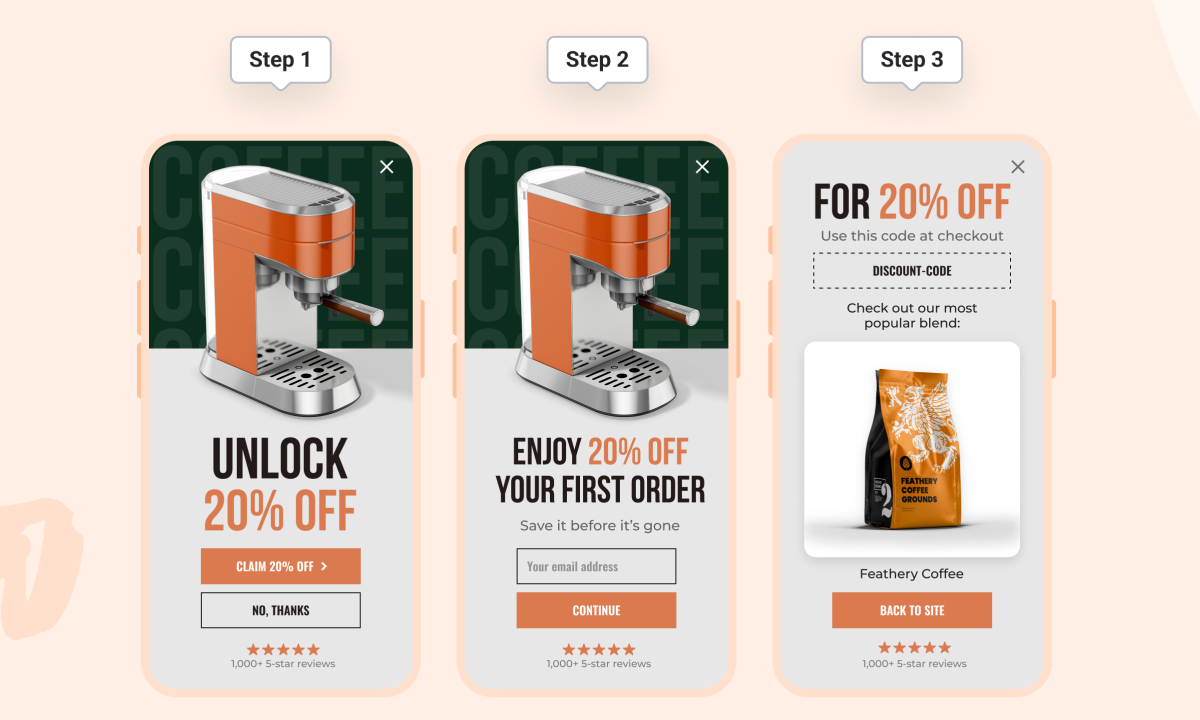
Set up the most effective list-building popup formula with these ready-to-use templates and increase conversions today:
2. Remind returning visitors where they left off
Many people don’t buy on their first visit, especially for high-ticket items. Use popups to remind returning visitors about products they viewed previously.
A simple welcome popup with a “Continue Shopping” button can make all the difference in converting repeat visitors.
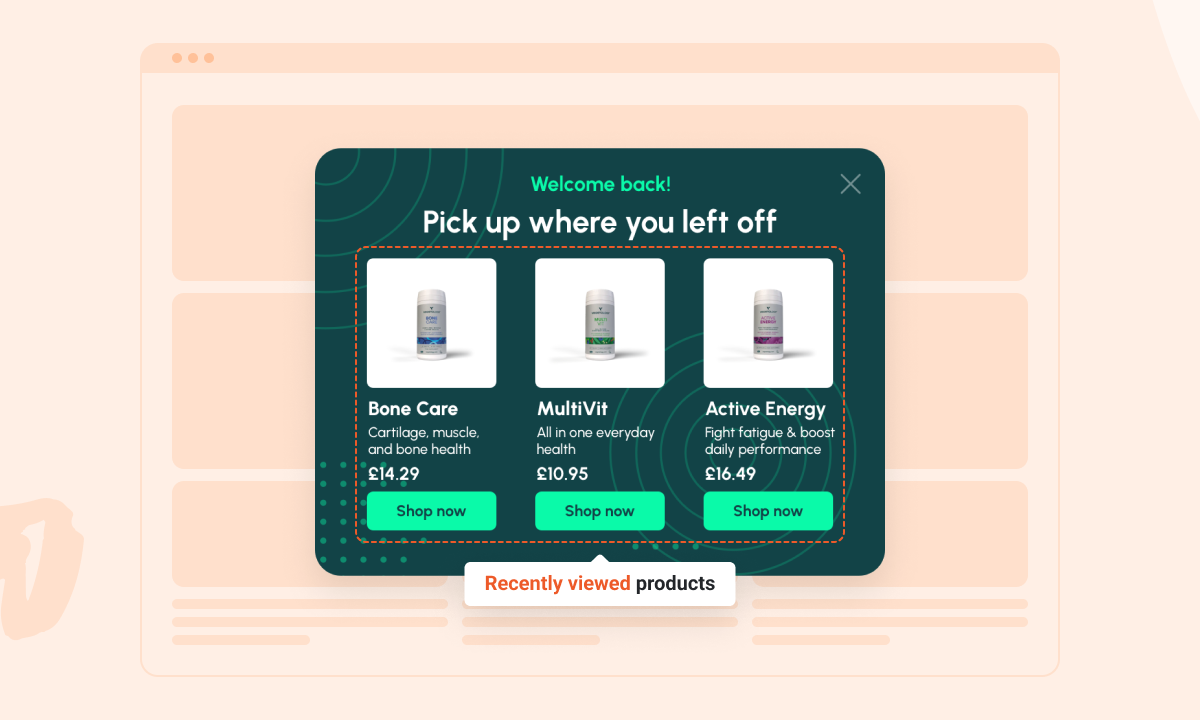
Use these templates to get started with this strategy:
3. Grow your email list & segment visitors at the same time
Collecting email addresses is crucial, but it’s not enough to send generic newsletters.
Use segmentational popups to ask visitors a question after they opt in, allowing you to sort them into groups. This way, you can send targeted emails that resonate better with each audience segment.
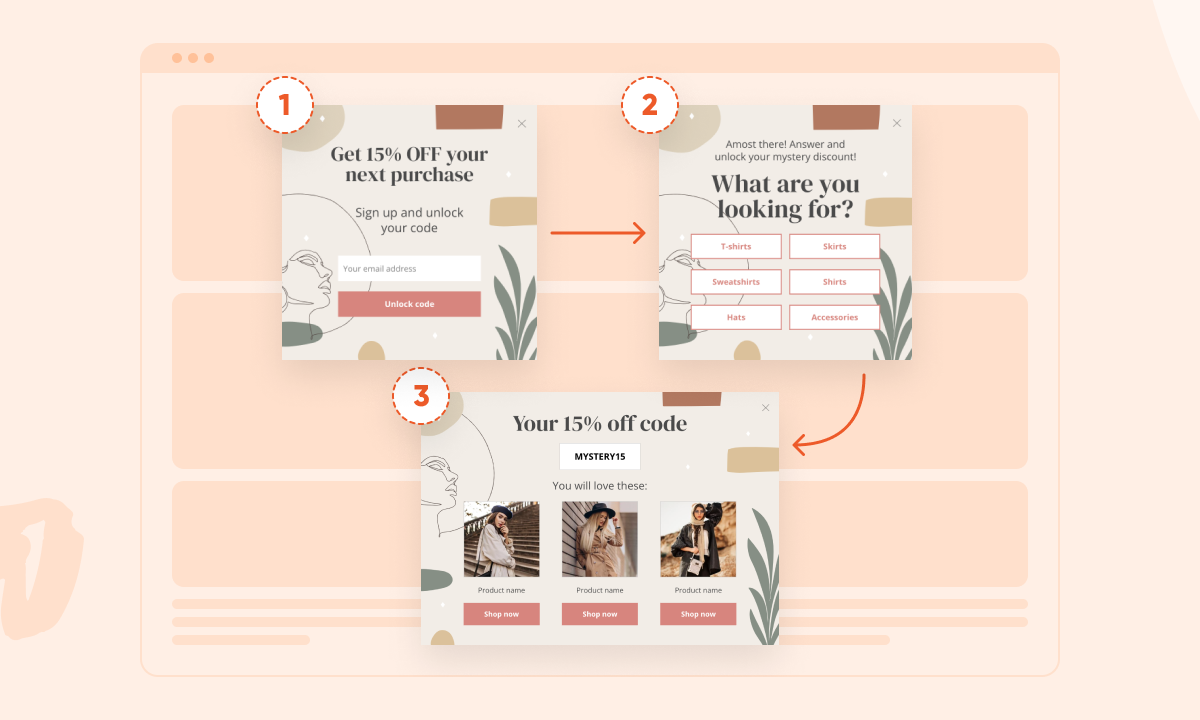
Want to segment your email list? Try these ready-to-use templates:
4. Recommend relevant products in blog posts
Your blog can be a powerful sales tool if you embed relevant product recommendations.
For example, if you’re writing about skincare tips, suggest related products at the end of the post. This subtle nudge can guide readers towards making a purchase.
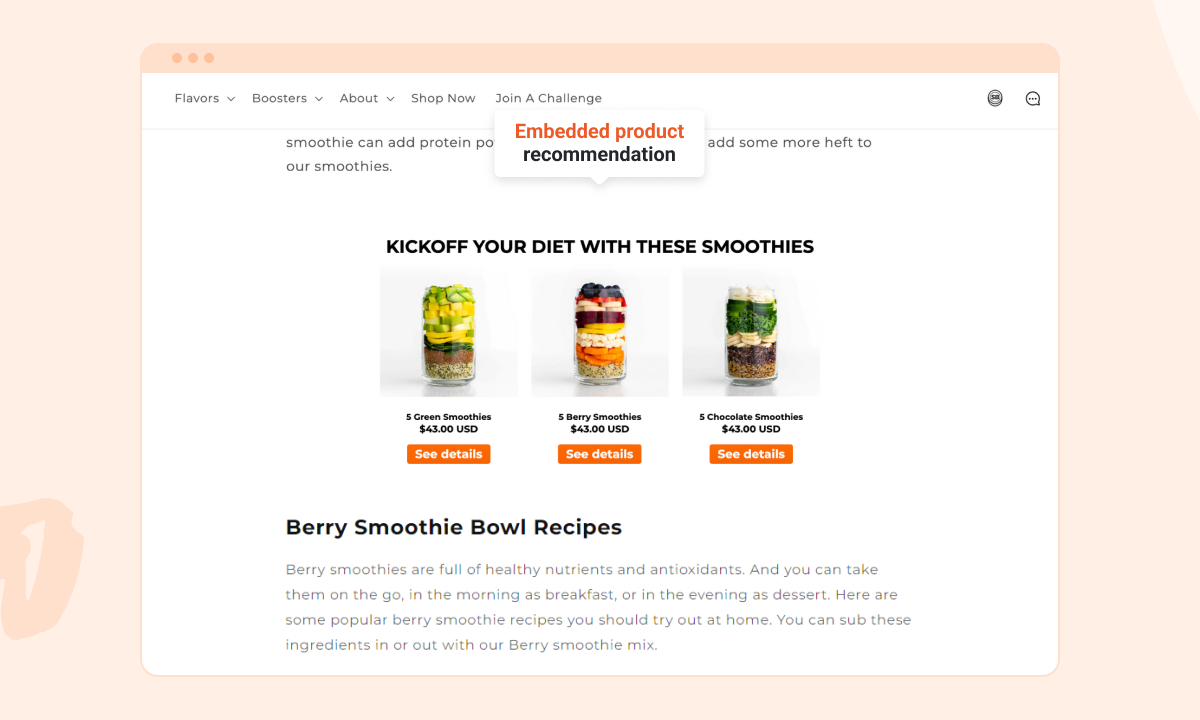
5. Remind users about their coupons
Offering coupons? Make sure people don’t forget about them!
Use a sticky bar that stays at the top or bottom of the page to remind visitors they have a discount waiting. This simple reminder can nudge people into completing their purchase.

Get started with these Discount Reminder sticky bars:
6. Promote a free shipping threshold based on cart value
Everyone loves free shipping. In fact, 90% of consumers say it’s their top incentive for shopping online.
Encourage larger purchases by promoting a dynamic free shipping threshold. Let customers know when they’re close to qualifying for free shipping using a sticky bar.
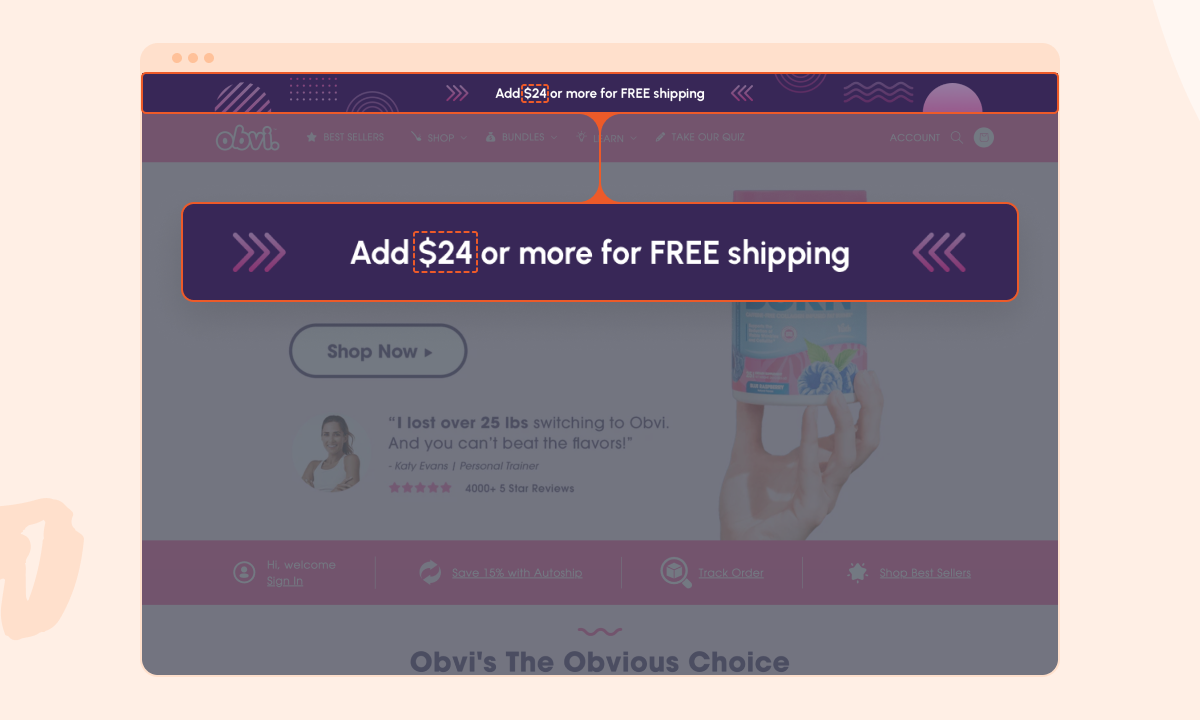
Here are some free shipping bar templates to help you get started:
7. Spotlight the most relevant products on exit-intent
Exit-intent popups can reduce bounce rates by offering visitors more tailored product suggestions before they leave.
Instead of relying on discounts, inspire them by showing how your products can improve their lives. Tailor these suggestions based on their browsing behavior to increase conversions.
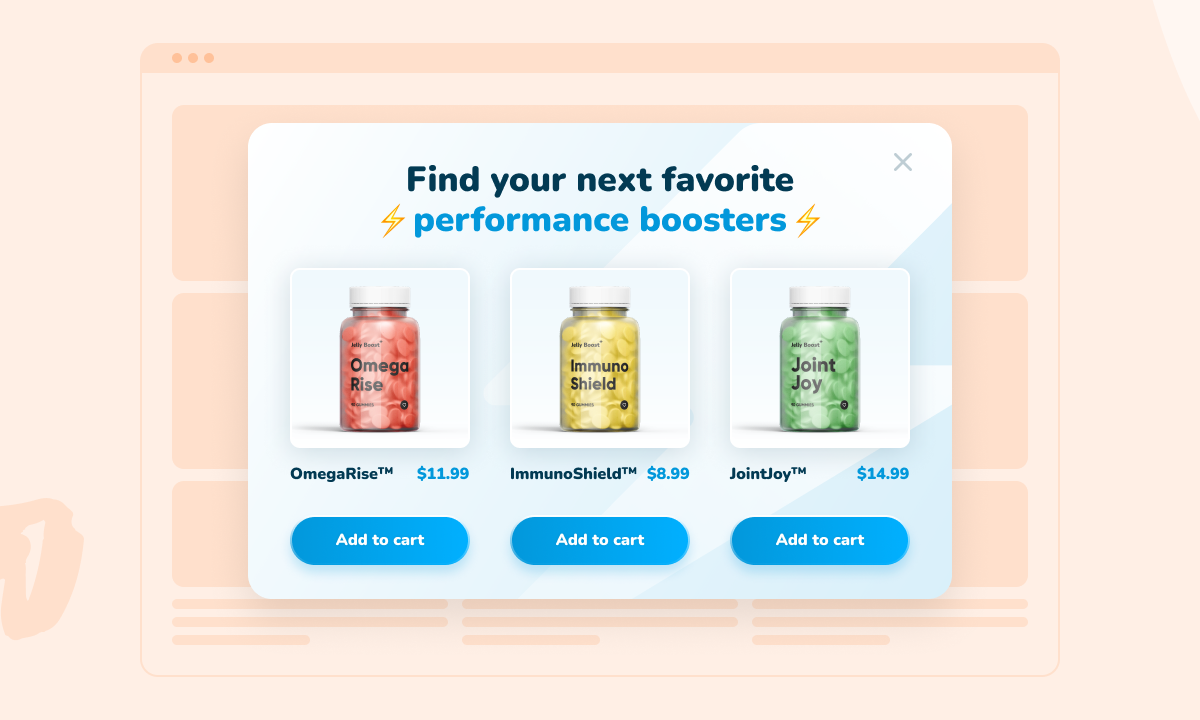
Wrapping up
Conversion rate optimization (CRO) is about constantly refining and optimizing your website to get more out of your existing traffic.
By following the steps we’ve covered and implementing an effective CRO strategy, you’ll be well on your way to boosting your website’s conversion rate and growing your business. CRO isn’t just a strategy—it’s a mindset of continual improvement.
Migration has never been easier
We made switching a no-brainer with our free, white-glove onboarding service so you can get started in the blink of an eye.
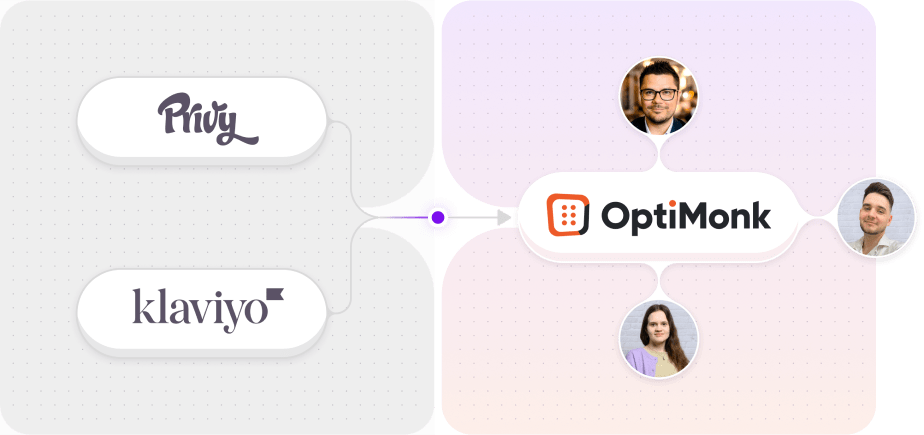
What should you do next?
Thanks for reading till the end. Here are 4 ways we can help you grow your business:
Boost conversions with proven use cases
Explore our Use Case Library, filled with actionable personalization examples and step-by-step guides to unlock your website's full potential. Check out Use Case Library
Create a free OptiMonk account
Create a free OptiMonk account and easily get started with popups and conversion rate optimization. Get OptiMonk free
Get advice from a CRO expert
Schedule a personalized discovery call with one of our experts to explore how OptiMonk can help you grow your business. Book a demo
Join our weekly newsletter
Real CRO insights & marketing tips. No fluff. Straight to your inbox. Subscribe now
Nikolett Lorincz
- Posted in
- Conversion
Partner with us
- © OptiMonk. All rights reserved!
- Terms of Use
- Privacy Policy
- Cookie Policy
Product updates: January Release 2025

